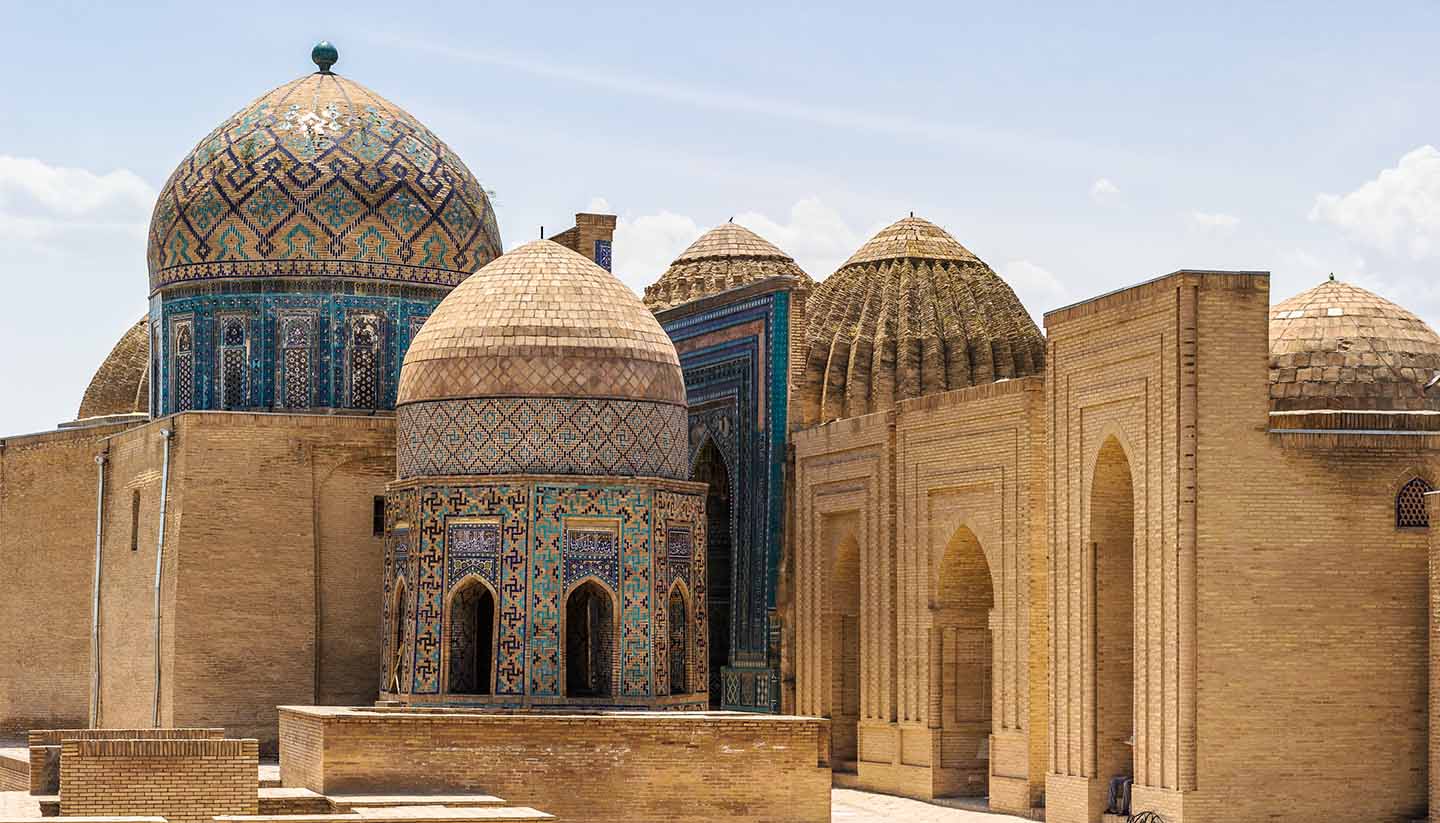Travel to Uzbekistan
Flying to Uzbekistan
The national airline is Uzbekistan Airways (www.uzairways.com), which offers direct flights from London. There are also plenty of indirect flight options with carriers such as Lufthansa (www.lufthansa.com), Aeroflot (www.aeroflot.com), Turkish Airlines (www.turkishairlines.com) and Air Baltic (www.airbaltic.com).
Notes
Customs forms are sometimes cause for concern with travellers entering or departing by air – these forms (there are two copies to fill out, one for them, one that you keep) simply require you to declare any currency you are either bringing into, or taking out of, Uzbekistan, along with the amount. Essentially the authorities are checking that you are not leaving Uzbekistan with more foreign money than you brought in; if this is found to be the case you will incur a significant fine.
Airport Guides
Tashkent International Airport
CodeTAS
LocationThe airport is in the south of the town, about 11km (7 miles) from the centre.
TelephoneAddressFlight times
From London - 7 hours.
Departure tax
None.
Travelling to Uzbekistan by Rail
With an ever-growing flight network and cheaper airfares, rail travel into Uzbekistan fares poorly in comparison with tales of discomfort and occasional theft. Still, it is an adventure, and in most cases foreigners are treated well and are sometimes toasted with clinks of vodka glasses. The Uzbekistan Railways site (www.uzrailpass.uz/index.php) is a useful website.
There are good rail connections into Tashkent from Almaty in Kazakhstan. From Almaty connecting trains are possible through to to Urumchi in China. From Moscow there is a train that departs from Kazanski station to Tashkent, four times a week; it takes over 60 hours and crosses in and out of Kazakhstan on the route, therefore a multiple Kazakh visa may be needed - double check before departing. Other major Russian cities also have direct trains to Uzbekistan, including St Petersburg, Ufa, Novosibirsk and Yekaterinburg (all of these routes also cross into Kazakhstan).
There is also a train from Kharkov in Ukraine to Tashkent, and it crosses through both Russia and Kazakhstan; visas are needed for both countries.
There is a run-down, little-used rail line into Tajikistan that is entirely dependent on the current political situation between the two countries. In theory you can travel on the Moscow – Dushanbe train which passes through Uzbekistan, or you can take the train to Termez and get off at Kumkurgan, from where you can take a taxi to the border with Tajikistan.
There is also a spur line to the Fergana Valley in the east of the country, which leads to Osh in Kyrgyzstan. It is possible to connect to China through Almaty; and to Iran and the Middle East (via Turkmenistan). Foreigners have to pay for rail tickets in hard currency, preferably US Dollars, but it is still a cheap option by Western standards.
Driving to Uzbekistan
Uzbekistan has road connections to all its neighbours. A Friendship Bridge links Afghanistan with Termiz in Uzbekistan (Termiz is a small city of little interest sitting at the southern most point of Uzbekistan), which while open to tourists, can sometimes close due to security concerns. It is advisable to check with a travel agent or locals before setting off.
The neighbouring country of Kyrgyzstan, popular with trekkers and mountaineers, offers three main border crossings into Uzbekistan: Uchkurgan, Dustlyk (Dostyk) and Khanabad (not to be confused with the ‘Khanabad’ in Afghanistan). The third is the most problematic. The region remains conservative and sees very few travellers.
Security can be tight at all crossings; you need to fill out customs forms and there can be long waits, so try to arrive early in the morning. Buses do travel between Tashkent and Bishkek (Kyrgyzstan) but as they pass through Kazakhstan, you need to arrange a Kazakh visa in advance. Visas are not available at any of these land borders.
For crossing into Tajikistan, the best, most scenic route, is between Samarkand and Penjikent (although this border often closes due to political tensions and there is no public transport). Taxis, which are readily available, are the only way to cross. Alternatively, the Oybek (Uzbekistan) border crossing, (a one-hour drive to Khujand in Tajikistan), is easier and is usually open. The last option is Denau (a two-hour drive from Termiz in Uzbekistan) -Tursanzade (a 45-minute drive to Dushanbe, capital of Tajikistan). Again, arrive early, be patient and arrive with the correct visas.
Turkmenistan and Uzbekistan are also linked by road. Most locals do this journey by shared taxi. The two easiest border crossings are the crossing that joins Bukhara with Turkmenabat and the Khiva/Urgench (the ‘Shavat to Dashoguz’ crossing). These borders have lengthy lunch breaks, and the Turkmen authorities will charge each traveller around US$12 ‘entry tax’, which must be paid in US Dollars only.
Kazakhstan offers two main entry points: the Chernyaevka crossing between Tashkent and Shymkent (easy, but long waiting times) and the more remote crossing between Karakalpakstan and Beyneu in western Kazakhstan.
Driving note
Most crossings in Central Asia open and close regularly without warning; the best advice is to check with a local travel agent or to ask around before setting off. Always travel with US Dollars just in case - for example, if you happen to lose a declaration form on exiting Uzbekistan, a small US$10 bribe will smooth things over. Expect to have to cobble together a combination of minibuses and taxis to get to and from all border points.
Getting to Uzbekistan by boat
Uzbekistan is doubly landlocked. There are no sea ports.
River Routes
Uzbekistan’s main river port is Termez on the Amu Darya river. This is not of interest to visitors as it serves as an important transfer point for humanitarian supplies entering Afghanistan.


